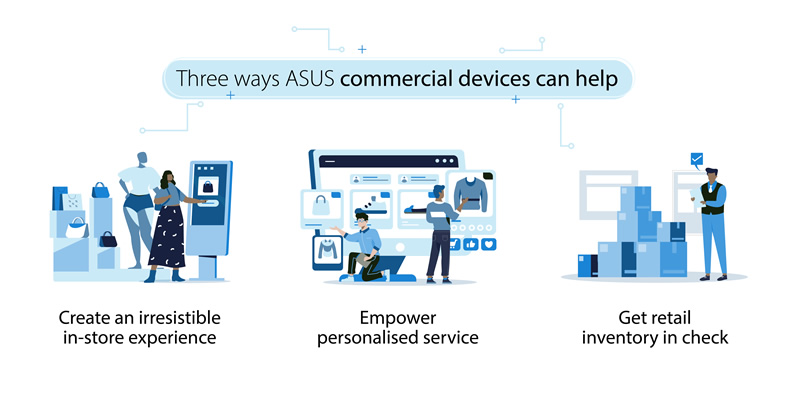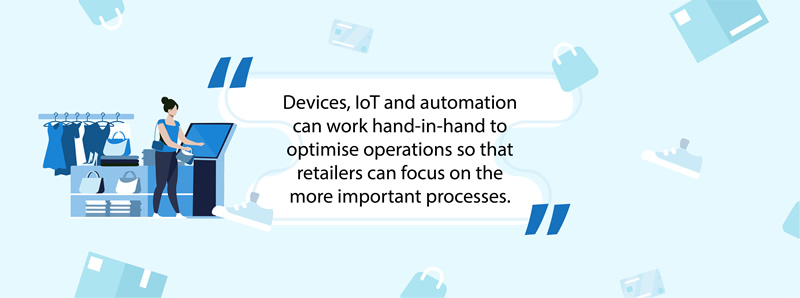
Apr 26, 2023
Back for more: creating engaging retail experiences with reliable ASUS devices

The Covid-19 pandemic ushered in a new approach to in-person shopping that was all about keeping human interactions to a minimum. Self-checkout kiosks and appointment scheduling are just some of the approaches that retailers took to keep customers safe and assured.
Yet, these innovations are about more than pandemic proofing. In fact, shaping a more seamless and connected in-store experience is now paramount to retail success. As the world recovers and physical stores are viable once again, companies must be ready for a new set of customer expectations revolving around better digital experiences and greater personalisation.
For small and medium-sized retailers especially, a large and costly digital transformation project may currently be out of reach. But little adjustments with reliable digital tools may be just what is needed to turn the in-store experience around and future-proof the business. From the right devices to the Internet of Things (IoT), here are some ways technology can elevate a retailer’s business.

Create an irresistible in-store experience
As people hunkered down at home and turned to online shopping during the pandemic, many retailers have been pushed to develop e-commerce strategies. Yet, a Salesforce survey found that 82% of sales occurred in-stores even during the height of the pandemic in 20201. For all the convenience that e-commerce provides, shoppers still turn to brick-and-mortar to look, touch, and buy merchandise in person.
Thoughtful digital touchpoints in physical stores can make all the difference as to whether shoppers enter – and stay – in-stores. Retailers can draw customers’ attention with brand videos or catchy advertising in storefronts, or drive engagement and purchase through interactive demos. All-in-one desktops like the ASUS ExpertCenter E5 AiO have the performance and flexibility for such varied, all-day use in retail shops, including a second, outward-facing touchscreen to allow salespeople and shoppers to interact over digital demos.
Empower personalised service
Two-thirds of respondents in a Salesforce survey2 said that they expect companies to understand their unique needs and expectations and to tailor their offers as a result. Retailers have a wealth of customer data to work with – they just need to put it in the hands of the service crew.
Service staff and cashiers should be able to assist shoppers in tracking down niche items, finding product substitutes, or recommending merchandise based on past purchases. To do so, they need -lasting devices that make customer data and insights accessible anywhere in the store. ASUS ExpertCenter E1 AiO sits unobtrusively on the retail counter or can even hang on the wall for quick access around the shop.
Retailers can also push how customer data is used for personalisation to the next level by moving to the cloud. An interview by McKinsey shared that customer personalisation directly correlates to incremental revenue and increased conversion rate3. What retailers struggle with is data reconciliation to get a 360-degree view of their customers4. Cloud-based data clean up and recommendation platforms will further enable hyper-personalisation in retail.
Get retail inventory in check

